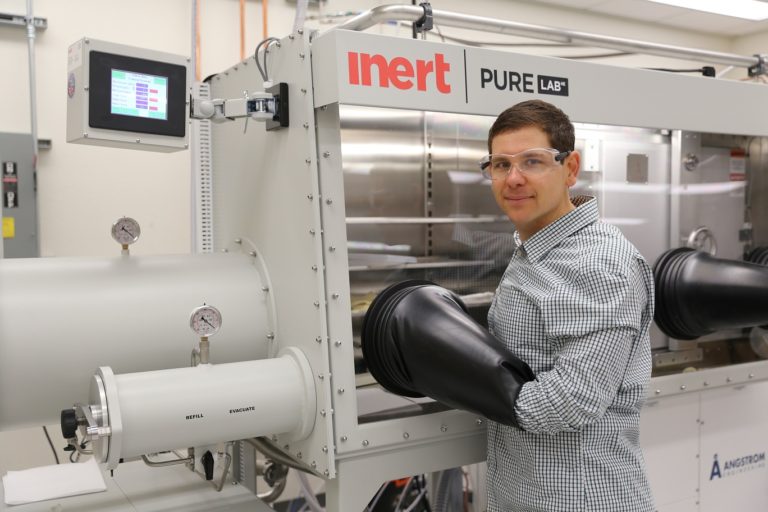In a study published recently in the Proceedings of the National Academy of Sciences, University of California, Irvine researchers have revealed the structure of a reflectin variant at the molecular level, and they have demonstrated a method for mechanically controlling the hierarchical assembly and optical properties of the protein. These findings are seen as key steps in exploiting many of the potentially useful attributes of the reflectin family.
“My laboratory at UCI has for a long time worked to mimic the light-scattering and light-reflecting powers of cephalopods with the goal of inventing new classes of adaptive thermoregulatory fabrics and other everyday technologies,” said co-author Alon Gorodetsky, UCI associate professor of chemical and biomolecular engineering. “With this research, we have focused on developing a detailed fundamental understanding of how reflectins function at a molecular level.”
Gorodetsky said scientists are attracted to reflectins because, similar to other protein-based materials, they offer many advantageous attributes such as controllable self-assembly, stimuli-responsiveness, customizable functionality and compatibility with other biological systems. The model biomaterials have also shown their usefulness for modifying the refractive index of human cells and supporting the growth of neural stem cells.
In their laboratory in UCI’s Henry Sameuli School of Engineering, Gorodetsky and his collaborators used bioinformatics predictions to select a reflectin variant, produced the protein in bacteria and developed solution conditions for maintaining it in a stable state.

Reflectins are proteins that enable squids, octopuses and cuttlefish to change their colors and blend in with their environment. Through a combination of experimental and computational methods, UCI engineering researchers have revealed the three-dimensional structure of a reflectin variant and developed methods for controlling its hierarchical assembly. The research may open new possibilities for applications of these proteins in electronics, optics and medicine. Image Credits: Squid – Roger T. Hanlon (photographer); schematics – Preeta Pratakshya / UCI
The researchers then used a variety of tools for analysis of the protein and its solutions, including molecular dynamics simulations, small-angle x-ray scattering, and nuclear magnetic resonance spectroscopy. They also probed the assembled multimeric protein ensembles with techniques such as atomic force microscopy and three-dimensional holotomographic microscopy. These methods enabled the team to assess a full range of qualities and properties for the reflectin variant.
“Through our synergistic computational and experimental approaches, we were able to elucidate the three-dimensional structure of the reflectin variant, thereby establishing a direct correlation between the protein’s structural characteristics and intrinsic optical properties,” said Gorodetsky. “This research can be viewed as a valuable conceptual framework for using this class of proteins in bioengineering applications.”
Gorodetsky said his team’s work will enable new techniques for processing reflectin-based materials and points to new avenues for custom tailoring films of the protein at the nano- and micro-meter scales, which would be beneficial for biophotonic and bioelectronic applications as well as for inspiring the design of polymeric materials with sophisticated light-scattering capabilities. He also said the approach used in this project could help better understand the mechanisms underpinning cephalopods’ ability to change color.
This project, which included researchers from North Carolina State University, the Slovenian Nuclear Magnetic Resonance Center, Graz University of Technology in Austria, and Elettra-Sincrotrone in Trieste, Italy, was supported primarily by the Air Force Office of Scientific Research.
About the University of California, Irvine: Founded in 1965, UCI is the youngest member of the prestigious Association of American Universities. The campus has produced three Nobel laureates and is known for its academic achievement, premier research, innovation and anteater mascot. Led by Chancellor Howard Gillman, UCI has more than 36,000 students and offers 222 degree programs. It’s located in one of the world’s safest and most economically vibrant communities and is Orange County’s second-largest employer, contributing $5 billion annually to the local economy. For more on UCI, visit www.uci.edu.
Media access: Radio programs/stations may, for a fee, use an on-campus ISDN line to interview UCI faculty and experts, subject to availability and university approval. For more UCI news, visit news.uci.edu. Additional resources for journalists may be found at communications.uci.edu/for-journalists.


